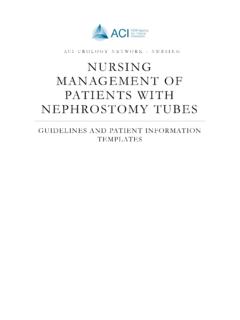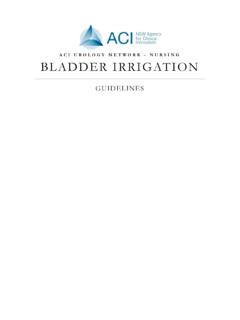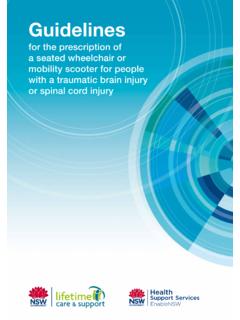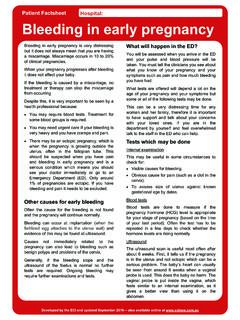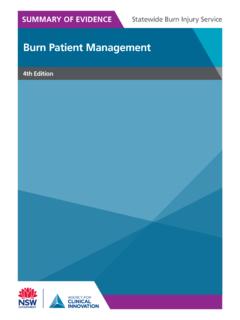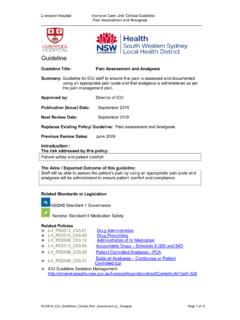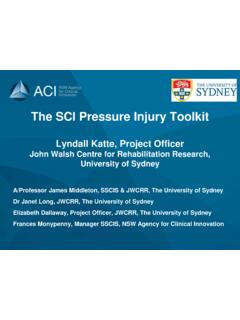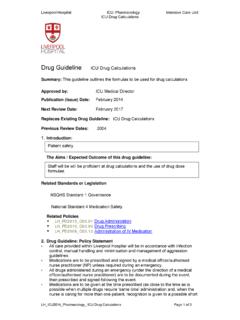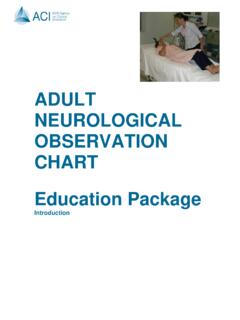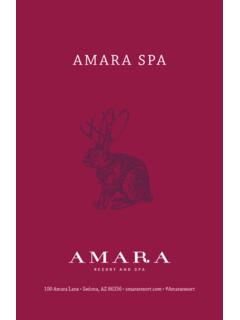Transcription of Complementary and Alternative Medicine (CAM)
1 Complementary and Alternative Medicine (CAM). CAM refers to forms of health care that are used in addition ( Complementary ) or instead of ( Alternative ) traditional medical treatment. Complementary therapies are often based on traditional knowledge. The scientific evidence suggests that some Complementary health approaches may help people manage chronic pain. In most instances, the amount of evidence is too small to clearly show whether a particular therapy is effective for everyone. There is less scientific evidence available about their safety and effectiveness, than for conventional treatments for pain management.
2 Many of the Complementary approaches studied for chronic pain have good safety records, but that doesn't mean that they are risk free for everyone. Many things need to be considered prior to using any CAM therapy such as a person's age, current health status, presence of other medical conditions or pregnancy. Another major consideration is taking prescribed or over the counter medications, as these may affect the safety of some Complementary approaches. If you are considering or using a Complementary approach for pain, you need to check with your health care provider to make sure that it is safe for you and is compatible with your conventional medical treatments.
3 Some herbs and conventional treatments can interact with other medications and stop them from working properly. They can also cause side effects. Regulation of Complementary therapists In Australia some Complementary therapists are regulated by national legislation. Chinese Medicine practitioners, acupuncturists, Chinese herbal Medicine dispensers These practitioners are members of the Chinese Medicine Board of Australia, part of the Australian Health Practitioner Regulation Agency (AHPRA) governed by the Health Practitioner Regulation National Law Act 2009 which also regulates 10 National Health Practitioner Boards.
4 This means that practitioners must be adequately qualified to practice. Naturopaths and herbalists These practitioners are covered by the Australian Register of Naturopaths and Herbalists. This self-governing body maintains a register that makes choosing a naturopath or a Western herbalist safer. The Commonwealth Department of Health and Ageing's Therapeutic Goods Administration is responsible for regulating therapeutic goods sold in Australia. These include medicines, herbal and nutritional supplements, flower remedies and homoeopathic medicines. Approved herbal and nutritional products have an Aust L code, which means they are considered low risk.
5 The products are assessed for safety, but not how well they work. CAM Therapies Mind-Body Techniques (Also known as Psychological techniques, Emotional Therapies or Spiritual Healing). Support Groups: These are organised groups where people with chronic pain and their families can meet other people going through similar experiences. Groups can offer practical and emotional support for people in pain or the people who help care for them. They can be in various forms: Face-to-face support groups Online discussion forums Telephone support groups Peer support programs Counselling: This allows the person in pain an opportunity to discuss various issues with a counsellor or psychologist.
6 They can help them identify problems and explore ways of resolving negative thoughts and feelings that may impact on that person's pain experience and life. It allows an opportunity for the individual to express their emotions in a safe, objective environment, helping to improve self-esteem, communication, relationships and specific difficulties. Hypnosis: Deep relaxation is used to help people become more aware of their inner thoughts. It focuses on inducing a psychological state of awareness, where distraction is minimised and focus and concentration is heightened.
7 Hypnosis can help overcome mental blocks that have previously stopped individuals from dealing with their anxieties, fears, low self- esteem, pain, insomnia or other unwanted habits. Art Therapy: This allows a way of using visual art to express a person's feelings. An art therapist can help a person in pain explore the images that they have created and understand some of their emotions and concerns. Music Therapy: This therapy allows people in pain to people express themselves and feel more in control. It aids relaxation, reduces stress and anxiety, focuses on healing and enjoying the moment.
8 Life Coaching: This is about helping people to develop their personal, spiritual, physical and professional lives. Its approach encourages people to live and enjoy their life to the fullest and is focused on finding solutions to problems and getting results by making positive changes for their future despite obstacles. Relaxation and Meditation: Relaxation usually includes slow breathing and muscle-loosening exercises to physically and mentally relax the body. Meditation is an ancient practice that involves holding your attention on a subject such as breathing. There are many different types of meditation.
9 Mindfulness meditation means being aware and present in each moment. Guided imagery, or visualisation, uses your imagination to create healing thoughts. Relaxation and meditation may help to release muscle tension, reduce stress, anxiety and pain. Spirituality: Spirituality can mean different things to different people. Some people may consider spirituality as being being part of a religious order eg Christianity, Judaism, Islam or Buddhism. For others, spirituality may reflect their own individual beliefs about the universe and their place in it, or a search for meaning and purpose to their lives.
10 When people have pain they may find comfort in prayer, meditation or quiet contemplation to help them to deal with it. Body-Based Practices (These can be Passive or Active Based Therapies). Massage Therapy: There are many styles of massage, but they all aim to promote deep relaxation in tissue by manually applying pressure, tension, vibration and the like to connective tissue and muscle, as a means of assisting relaxation, healing, and well-being. Massage may help reduce low back pain, anxiety and stress, nausea and muscle tension. Reflexology: This is a form of foot and hand massage.
